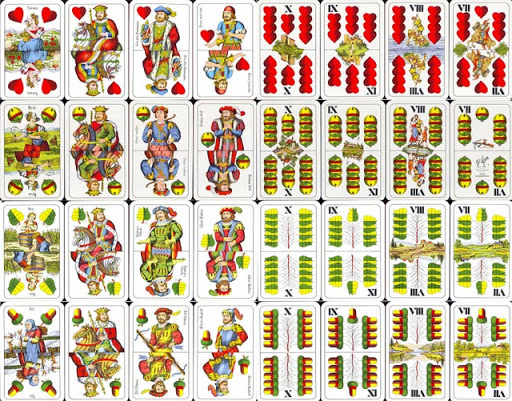
Mini Hungarian language lesson: house of cards
A historic house being demolished to make way for yet another hotel is an everyday occurrence in downtown Budapest.
But today's news about the demise of the house that used to host the pub called "The Wichmann" is sadder than most.


Then in 2018 it was announced the pub will be sold; Wichmann was 70 at the time and said he was just tired and old. He died less than two years later
Take a look at this gate ornament for example. If your first reaction is WTF?, I'm not blaming you.

For this house used to be the home of the Theosophical Society of Hungary in the first half of the 20th century.

It reportedly stood out from the neighbouring upmarket brothels by dint of the women working there taking a bath not once but twice a week.
But not all innovations in this house were of a pubic nature.
Of course no-one else outside of Hungary calls it that, it's called Swiss/Tell or Seasons Pattern, or Doppeldeutsche in German.

As you can also see, this is a picquet pack with only 32 cards.
In 1836 censorship was pretty strict, so Hungarian heroes would've been right out. But the story of William Tell is still a nod to the struggle and liberation from the Habsburgs.
And instead of Jacks and Queens we have Alsó ("lower") and Felső ("upper"), or archaically "filkó".
I don't know if Stüssi was particularly dim in the original story but there we are.

More from Education
Chicago Public Schools are supposed to open for some special needs and pre-K students Monday
The Chicago Teachers Union is now threatening to refuse to return to work in person.
https://t.co/MgDgNe6REj

Meanwhile
https://t.co/FIij8J3r7z
Dr. Fauci: "The default position should be to try as best as possible within reason to keep the children in school or to get them back to school [...] if you look at the data the spread among children and from children is not really big at

UNICEF: "Data from 191 countries shows no consistent link between reopening schools and increased rates of coronavirus
The Chicago Teachers Union is now threatening to refuse to return to work in person.
https://t.co/MgDgNe6REj

Meanwhile
https://t.co/FIij8J3r7z
Dr. Fauci: "The default position should be to try as best as possible within reason to keep the children in school or to get them back to school [...] if you look at the data the spread among children and from children is not really big at

UNICEF: "Data from 191 countries shows no consistent link between reopening schools and increased rates of coronavirus
You May Also Like
I just finished Eric Adler's The Battle of the Classics, and wanted to say something about Joel Christiansen's review linked below. I am not sure what motivates the review (I speculate a bit below), but it gives a very misleading impression of the book. 1/x
The meat of the criticism is that the history Adler gives is insufficiently critical. Adler describes a few figures who had a great influence on how the modern US university was formed. It's certainly critical: it focuses on the social Darwinism of these figures. 2/x
Other insinuations and suggestions in the review seem wildly off the mark, distorted, or inappropriate-- for example, that the book is clickbaity (it is scholarly) or conservative (hardly) or connected to the events at the Capitol (give me a break). 3/x
The core question: in what sense is classics inherently racist? Classics is old. On Adler's account, it begins in ancient Rome and is revived in the Renaissance. Slavery (Christiansen's primary concern) is also very old. Let's say classics is an education for slaveowners. 4/x
It's worth remembering that literacy itself is elite throughout most of this history. Literacy is, then, also the education of slaveowners. We can honor oral and musical traditions without denying that literacy is, generally, good. 5/x
As someone\u2019s who\u2019s read the book, this review strikes me as tremendously unfair. It mostly faults Adler for not writing the book the reviewer wishes he had! https://t.co/pqpt5Ziivj
— Teresa M. Bejan (@tmbejan) January 12, 2021
The meat of the criticism is that the history Adler gives is insufficiently critical. Adler describes a few figures who had a great influence on how the modern US university was formed. It's certainly critical: it focuses on the social Darwinism of these figures. 2/x
Other insinuations and suggestions in the review seem wildly off the mark, distorted, or inappropriate-- for example, that the book is clickbaity (it is scholarly) or conservative (hardly) or connected to the events at the Capitol (give me a break). 3/x
The core question: in what sense is classics inherently racist? Classics is old. On Adler's account, it begins in ancient Rome and is revived in the Renaissance. Slavery (Christiansen's primary concern) is also very old. Let's say classics is an education for slaveowners. 4/x
It's worth remembering that literacy itself is elite throughout most of this history. Literacy is, then, also the education of slaveowners. We can honor oral and musical traditions without denying that literacy is, generally, good. 5/x






























